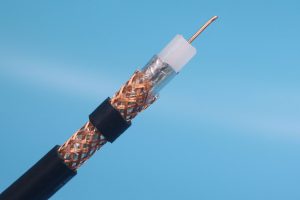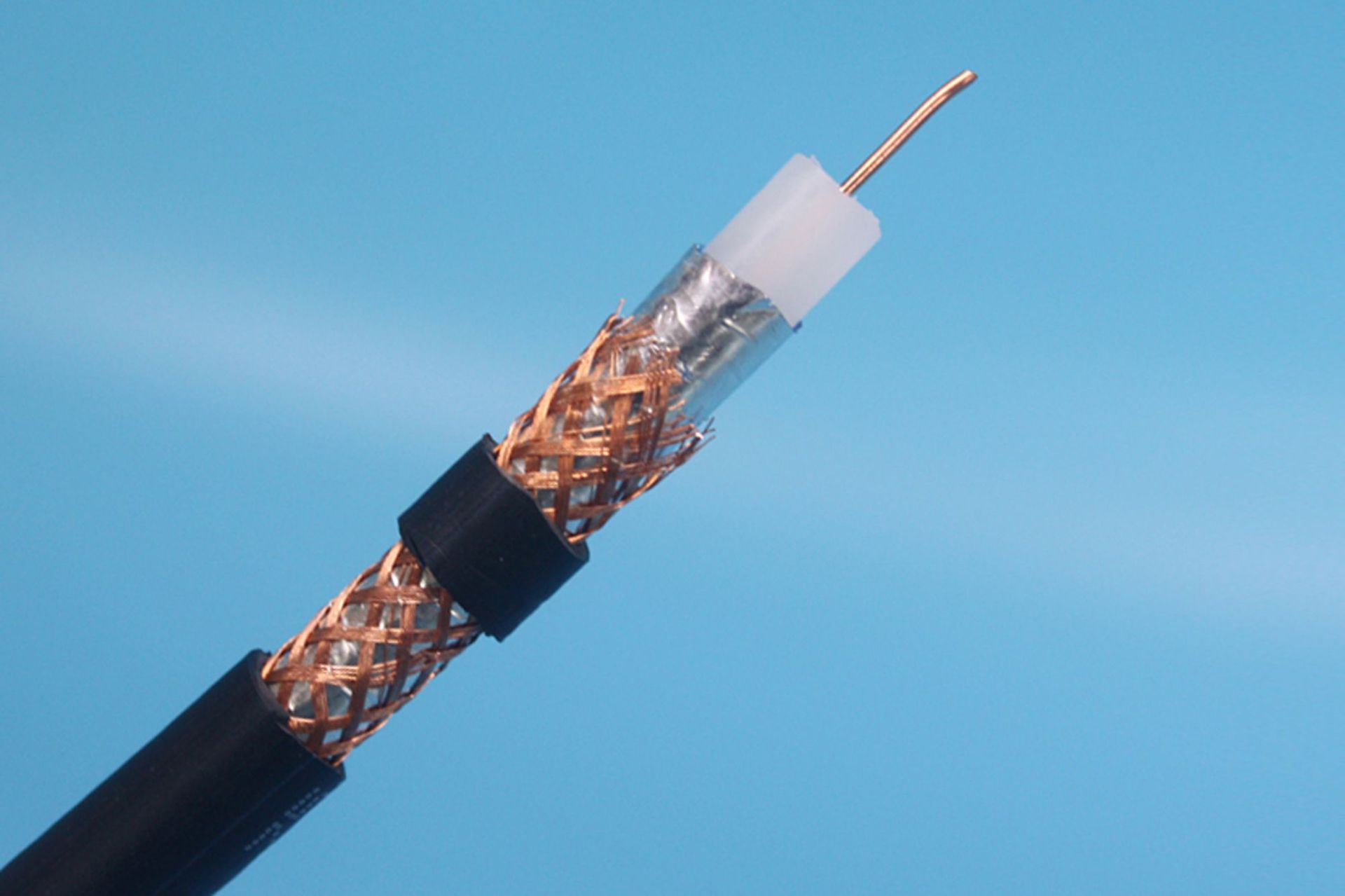Coaxial cable is known to be a broadband transmission line with low loss and high isolation.
Coaxial cable consists of two concentric cylindrical conductors separated by a dielectric spacer.
The capacitance and inductance distributed along the coaxial cable create a distributed impedance, or characteristic impedance, throughout the structure.
The resistive losses distributed along the coaxial cable make the losses and behavior along the line predictable.
With the combination of these factors, coaxial cables produce much less loss and generate less interference when transmitting electromagnetic (EM) energy than antennas in free-space propagation conditions.
Structure of coaxial cable
Coaxial cable products have an external conductive shield. Additional material layers can be used on the outside of the coaxial cable to improve environmental performance, EM shielding capability, and flexibility.
Coaxial cable can be made from braided conductor strands, which, when combined with clever layering, makes the cable highly flexible and reconfigurable, lightweight, and durable.
As long as the coaxial cable’s cylindrical conductors remain concentric, bending and flexing will have little to no effect on the cable’s performance.
For this reason, coaxial cables are typically attached to coaxial connectors using a screw-type mechanism with a torque wrench for tightness control.

How Coaxial Cable Works
Coaxial cables have a number of important frequency-dependent characteristics that define their application potential and skinning depth and cutoff frequency.
Skinning depth describes the phenomenon that occurs with higher frequency signals propagating along a coaxial cable.
The higher the frequency, the more electrons tend to move toward the conductor surface of the coaxial line.
The skin effect leads to increased attenuation and dielectric heating, resulting in greater resistive losses along the coaxial line.
To reduce the losses caused by the skinning effect, larger-diameter coaxial cables can be used.
Identifying coaxial cable
The following is the difference between twisted pair, coaxial cable, and fiber optic cable.
Most of us know the difference between ADSL and fiber optic Internet, but may not be so sure about the cables behind these connections.
The three most common types of communication cables are twisted pair, coaxial and fiber optic.
Understanding the differences between these three will give you an idea of how data is transmitted through each cable, which ultimately affects your connection, speed, latency, security, cost, and more once you shop for a cable.
Twisted pair cable
In fact, twisted pair cables are a pair of insulated wires that are twisted together to help reduce noise from external sources.
But these cables are still susceptible to outside noise.
Of the three, twisted pair cable is the most cost-effective option, but also brings lower bandwidth and higher attenuation.
There are two types of twisted pair cables.
Shielded twisted pair (UTP)
Shielded means reasonably shielded to block interference. Typically used for residential and commercial applications.
Shielded Twisted Pair
Shielded with an aluminum foil jacket to eliminate any external interference.
Typically used for high-end applications in large enterprises and for external cables that may be exposed to environmental factors
Coaxial Cable
A coaxial cable is a high-frequency transmission cable consisting of a single solid copper core.
The data is transmitted through the inner conductor and the transmission capacity is 80 times higher than that of twisted pair cable.
This cable is typically used to transmit television signals, for example, with a high bandwidth, which makes it more suitable for video applications, and to connect computers in a network.
In addition to stable data transmission, coaxial cables are also resistant to interference and protect the signal from interference. The cost is slightly higher than twisted pair but is still considered more economical than fiber optics.
There are two other types of coaxial cables.
75 Ohm, most commonly used for dry transmission of video signals.
Usually connects the video signal between components such as DVDs, VCRs, or receivers, commonly known as ANV cables.
50 Ohm, used primarily for transmitting data signals to 2 communication systems.
Most commonly used for dry computer Ethernet, AM/FM radio receivers, GPS antennas, toaster scanners, and cell phone systems.

Fiber Optic Cables
Fiber optic is the latest form of transmission cable technology.
Instead of transmitting data with copper wires, these cables use optical fibers that transmit data with light rather than electrical pulses.
Each fiber is individually coated with a plastic layer wrapped in a protective tube that is resistant to external interference.
ZMS fiber optic cables then are very reliable, ultra-fast connections with a transmission capacity 26,000 times higher than twisted pair cables. Fiber optic cables are also available in two types.
Single model
The core is small and can only propagate one mode of light at a time, so light reflections are reduced as they pass through the core.
The result is low attenuation, and data can travel faster and farther. Commonly used in dry telecommunications, TV networks, and universities.
Multimode
The larger core diameter allows multiple modes of light to be propagated.
As light is reflected across the core, the number of reflections increases, allowing more data to pass through.
Due to their high dispersion, multimode cables have lower bandwidth, higher attenuation, and reduced signal quality during transmission.
It is commonly used for short-distance communications such as LAN, security systems, and general-purpose fiber optic networks.
This is an introduction to coaxial cables.
In the application of coaxial cable, good cable quality is the basis.
Choosing the right cable connector solution with the same performance as the cable is the ultimate value of the coaxial cable.
Therefore, when choosing coaxial cable, first, choose a supplier with a full set of cables and supporting aluminum connection accessories production, the ability to provide the right connection technology solutions, excellent product quality, and comprehensive cost performance, followed by consideration of the price difference between brands at the same level.
Welcome to ZMS cable.
